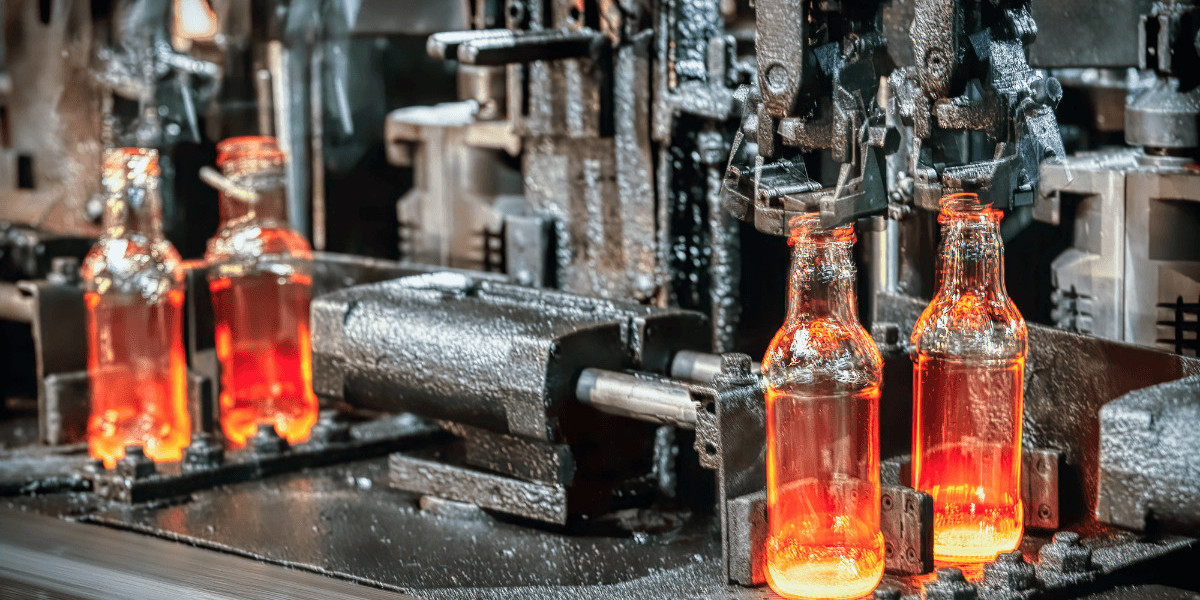In the glass manufacturing industry, ensuring the safety of both workers and the environment is of utmost importance. This is where process safety management consulting plays a crucial role. By implementing effective safety practices and strategies, Malaysian glass manufacturers can not only enhance their operations but also contribute to sustainable manufacturing practices.
Process safety management consulting focuses on identifying and mitigating potential hazards throughout the manufacturing process. It emphasizes the use of best practices to prevent accidents, injuries, and environmental incidents. Consultants work closely with glass manufacturers to develop and implement comprehensive safety plans, train employees, and monitor compliance with safety regulations.
By integrating sustainability initiatives into process safety management, glass manufacturers can reduce their environmental impact. This includes optimizing energy consumption, minimizing greenhouse gas emissions, and implementing waste management strategies. Process safety management consultants also help manufacturers adopt eco-friendly alternatives to traditional raw materials, such as soda ash.
Overall, process safety management consulting enables glass manufacturers in Malaysia to uphold the highest standards of safety while embracing sustainable practices. It is a crucial component in achieving both operational excellence and environmental stewardship in the glass manufacturing industry.
Environmental Stewardship in Glass Manufacturing
Environmental stewardship plays a crucial role in the glass manufacturing industry, as it focuses on reducing the environmental impact of production processes and promoting sustainable practices. Glass manufacturers have been increasingly adopting eco-friendly initiatives and materials to contribute to a greener future. Here are some key aspects of environmental stewardship in glass manufacturing:
Use of Eco-Friendly Practices and Materials
Glass manufacturers are actively seeking ways to minimize their carbon footprint and reduce harmful emissions. They are implementing energy-efficient processes and technologies to optimize their production methods. For instance, the use of advanced melting furnaces, such as the new Bascharage float glass furnace, helps reduce energy consumption and lowers greenhouse gas emissions.
Moreover, the adoption of eco-friendly raw materials is gaining traction in the industry. Glass manufacturers are increasingly using cullet (recycled glass) in their production processes. This not only reduces the demand for virgin materials like soda ash, but also saves energy. Additionally, the sourcing of raw materials from sustainable and responsibly managed sources, such as bamboo forests or coconut-based products, is becoming more prevalent.
Cradle to Cradle Certification and Sustainable Transition
Glass manufacturers are striving to obtain certifications like the Cradle to Cradle (C2C) certification, which ensures that their products and processes adhere to strict sustainability standards. This certification evaluates various aspects, including material health, product circularity, renewable energy usage, water stewardship, and social fairness. It encourages a continuous cycle of material reuse and recycling, promoting a sustainable transition in the industry.
Energy Conservation and Waste Management
To minimize energy consumption, glass manufacturers are investing in renewable energy sources and improving energy management systems. They are adopting innovative technologies like digital twin systems, which enable them to monitor and optimize energy usage throughout the production cycle.
Waste management is another key aspect of environmental stewardship. Glass manufacturers are implementing comprehensive recycling programs, encouraging their customers to return glass products for recycling. This reduces the amount of glass waste that ends up in landfills and conserves valuable resources.
The Lifecycle of Glass: From Production to Recycling
Glass is a versatile material that plays a significant role in various industries, from construction to packaging. Understanding the lifecycle of glass, from its production to recycling, is essential for adopting sustainable practices in the glass manufacturing industry.
1. Glass Production Process
Glass production begins with the sourcing of raw materials, such as silica sand, soda ash, limestone, and cullet (recycled glass). These materials are blended and heated in a furnace at high temperatures, melting them into a molten liquid. The molten glass is then shaped into the desired form through processes like blowing, pressing, or casting. After shaping, the glass is cooled rapidly to strengthen its structure.
2. Importance of Recycling in Glass Manufacturing
Recycling plays a crucial role in the sustainability of the glass industry. By recycling glass, we can reduce the demand for raw materials and conserve natural resources. The recycling process involves collecting used glass, sorting it by color, and crushing it into small pieces, known as cullet. This cullet is then mixed with new raw materials and melted in the furnace, reducing the energy required for production and the emissions of greenhouse gases.
Recycled glass, or cullet, can replace a percentage of the raw materials in the glass production process, thereby reducing the environmental impact associated with mining and extraction. Moreover, glass can be recycled indefinitely without losing its quality or purity. By promoting glass recycling and incorporating cullet into the manufacturing process, glass manufacturers can significantly reduce energy consumption, carbon emissions, and landfill waste.
3. Sustainable Waste Management in Glass Manufacturing
In addition to recycling, efficient waste management is imperative for sustainable glass manufacturing. Glass manufacturers should implement strategies to minimize waste generation and properly handle any waste produced. This may include optimizing processes to reduce scrap, implementing recycling programs within the facility, and partnering with external recycling organizations.
Proper waste management not only reduces environmental impact but also presents cost-saving opportunities for glass manufacturers. By reusing or recycling waste materials, manufacturers can minimize disposal costs and potentially generate additional revenue streams.
Best Practices for Process Safety Management in Glass Manufacturing
Implementing effective process safety management (PSM) practices is crucial for ensuring the safety of workers and minimizing the risk of accidents in the glass manufacturing industry. Here are some key best practices to consider:
1. Conduct Comprehensive Hazard Assessments
Regular and thorough hazard assessments are essential in identifying potential risks and hazards in the glass manufacturing process. This includes evaluating the use of hazardous materials, equipment operation, and potential fire and explosion hazards. By identifying and mitigating potential risks, manufacturers can minimize the likelihood of accidents and protect the well-being of their employees.
2. Establish Robust Safety Policies and Procedures
Clear and well-defined safety policies and procedures should be established to guide employees in adhering to best practices and safety regulations. This includes providing comprehensive training on safety protocols, emergency procedures, and the proper use of safety equipment. Regular safety drills and updates on new safety guidelines should also be conducted to ensure everyone is up to date with the latest practices.
3. Implement Regular Equipment Maintenance and Inspection
Regular equipment maintenance and inspection are crucial in ensuring the safe and optimal operation of glass manufacturing machinery. This includes routine checks, servicing, and calibration to identify and address any potential issues that could compromise safety. Equipment should also be regularly monitored for signs of wear and tear or malfunctioning components that could pose a risk to workers.
4. Promote a Culture of Safety Awareness
Encouraging a culture of safety awareness among employees is essential for maintaining a safe working environment. This can be achieved through ongoing safety training, clear communication of safety expectations, and empowering employees to report any safety concerns or near misses they may encounter. Regular safety meetings and open dialogues can also foster a sense of ownership and responsibility for maintaining safety standards.
5. Develop Emergency Response Plans
Being prepared for emergency situations is critical in the glass manufacturing industry. Establishing comprehensive emergency response plans that outline specific protocols and procedures for evacuations, containment of hazardous materials, and communication with emergency services can significantly minimize the impact of potential accidents. Regular drills and testing of emergency response procedures should be carried out to ensure readiness.
By adhering to these best practices, glass manufacturers can enhance process safety management and create a safer working environment for their employees. Implementing effective PSM strategies not only ensures compliance with safety regulations but also promotes the overall sustainability and success of the industry.
The Role of Digital Twin Technology in Glass Manufacturing
Digital twin technology has emerged as a powerful tool in the glass manufacturing industry, revolutionizing process safety management and driving efficiency gains. By creating virtual replicas of physical assets and processes, digital twins enable manufacturers to simulate, monitor, and optimize their operations in real-time. In the context of glass manufacturing, the application of digital twin technology offers numerous benefits, ranging from enhancing safety protocols to improving product quality.
Real-Time Monitoring and Predictive Maintenance
Digital twin technology provides manufacturers with real-time insights into the performance of their glass manufacturing processes. Through sensors and data integration, digital twins continuously monitor key parameters such as temperature, pressure, and energy consumption. This enables proactive identification of potential risks or deviations from optimal conditions, allowing operators to intervene before safety or quality issues arise. Moreover, by leveraging machine learning algorithms, digital twins can predict maintenance needs, reducing unplanned downtime and optimizing production schedules.
Optimization of Production Parameters
Glass manufacturing involves precise control of various factors such as temperature, composition, and cooling rates. Digital twin technology allows manufacturers to simulate different scenarios and test various parameters virtually, enabling them to identify the optimal settings for production processes. By fine-tuning these parameters, manufacturers can achieve higher yields, reduce waste, and enhance the overall efficiency of the production line.
Training and Simulation
Digital twins also serve as valuable tools for training operators and conducting simulations in a safe and controlled environment. Operators can familiarize themselves with complex operations, explore different scenarios, and practice troubleshooting without exposing themselves to any physical risks. This helps enhance their skills and confidence, leading to improved safety and productivity.
Continuous Improvement and Innovation
Through the analysis of real-time data collected by digital twins, manufacturers can gain valuable insights into their processes, identifying areas for improvement and innovation. By analyzing the performance of different production lines or equipment, manufacturers can identify bottlenecks, inefficiencies, or areas where new technologies could be integrated to optimize operations and reduce the environmental impact of glass manufacturing.
The Impact of Sustainable Practices on Glass Quality and Performance
Sustainable practices in glass manufacturing have a direct impact on the quality and performance of glass products. By adopting eco-friendly initiatives and implementing process safety management strategies, glass manufacturers can enhance the overall manufacturing process while reducing their environmental footprint.
One of the key benefits of sustainable practices is the use of alternative materials. By incorporating soda ash made from recycled glass cullet into the production process, manufacturers can reduce the reliance on virgin raw materials while maintaining high product quality. This not only reduces the environmental impact but also ensures consistent product performance.
Furthermore, sustainable practices promote efficient energy usage. By adopting technologies such as AI-powered analytics and digital twin systems, manufacturers can optimize energy consumption throughout the glass manufacturing process. This results in lower energy costs and more sustainable production practices without compromising on quality or performance.
Sustainable practices also play a crucial role in waste management. Implementing effective recycling and waste reduction strategies allows manufacturers to minimize waste generation and maximize resource utilization. This contributes to the overall sustainability of the glass industry while ensuring the production of high-quality glass products.
In addition, sustainable practices drive innovation in the glass manufacturing industry. With a focus on eco-friendly alternatives and efficient processes, manufacturers are encouraged to explore new product designs and solutions. This leads to the development of environmentally friendly applications for glass, creating a wider range of options for consumers while maintaining the desired quality and performance characteristics.
The Future of Sustainable Glass Manufacturing in Malaysia
As the global focus on sustainability continues to grow, the future of glass manufacturing in Malaysia is poised for significant advancements in eco-friendly practices. With increasing consumer demand for environmentally conscious products, glass manufacturers are recognizing the importance of embracing sustainable initiatives to reduce their environmental impact.
One key trend that is expected to shape the future of glass manufacturing is the adoption of digital twin technology. By creating virtual replicas of manufacturing processes, glass manufacturers can optimize production efficiency and minimize energy consumption. This technology allows for real-time monitoring and analysis, enabling proactive measures to enhance process safety and reduce waste.
Additionally, there is a growing emphasis on the use of alternative raw materials in glass production. Sustainability-focused initiatives such as sourcing silica sand from renewable sources and reducing reliance on soda ash are gaining traction. This shift towards more sustainable inputs ensures a decreased ecological footprint while maintaining the quality and performance of glass products.
In the coming years, the Malaysian glass manufacturing industry is likely to witness increased collaborations between industry players, academic institutions, and sustainability consultants. These partnerships will drive innovation and knowledge-sharing, leading to the development of best practices tailored specifically for the local context.
It is important to note that while the future of sustainable glass manufacturing looks promising, challenges such as the high energy requirements of glass production and the need for efficient recycling systems must be addressed. However, with concerted efforts and a commitment to continuous improvement, Malaysia has the potential to become a global leader in sustainable glass manufacturing.
By implementing process safety management consulting and incorporating eco-friendly practices, Malaysian glass manufacturers can pave the way for a brighter and more sustainable future.
Conclusion
Process safety management consulting plays a crucial role in promoting sustainable practices in the glass manufacturing industry. By implementing effective strategies and best practices, Malaysian glass manufacturers can reduce their environmental impact and contribute to a greener future.
Throughout this article, we have highlighted the significance of process safety management consulting in the context of sustainable glass manufacturing in Malaysia. We explored the importance of environmental stewardship and the use of eco-friendly practices and materials in the industry. The lifecycle of glass, from production to recycling, was also discussed, emphasizing the need for sustainable waste management.
Moreover, we identified key best practices for implementing process safety management in the glass manufacturing industry. These practices ensure the safety of workers, optimize production processes, and minimize environmental risks.
Looking ahead, the adoption of digital twin technology holds great promise for enhancing process safety and efficiency in glass manufacturing. This advanced technology enables real-time monitoring, predictive maintenance, and optimization of manufacturing processes.
In addition to its environmental benefits, sustainable glass manufacturing positively influences the quality and performance of glass products. By incorporating eco-friendly practices, manufacturers can enhance the durability, transparency, and aesthetics of their glass items.
As we move towards the future, the sustainable transition in the glass manufacturing industry will continue to evolve in Malaysia. Manufacturers are increasingly recognizing the importance of environmental stewardship and striving to adopt sustainable practices throughout their operations.








